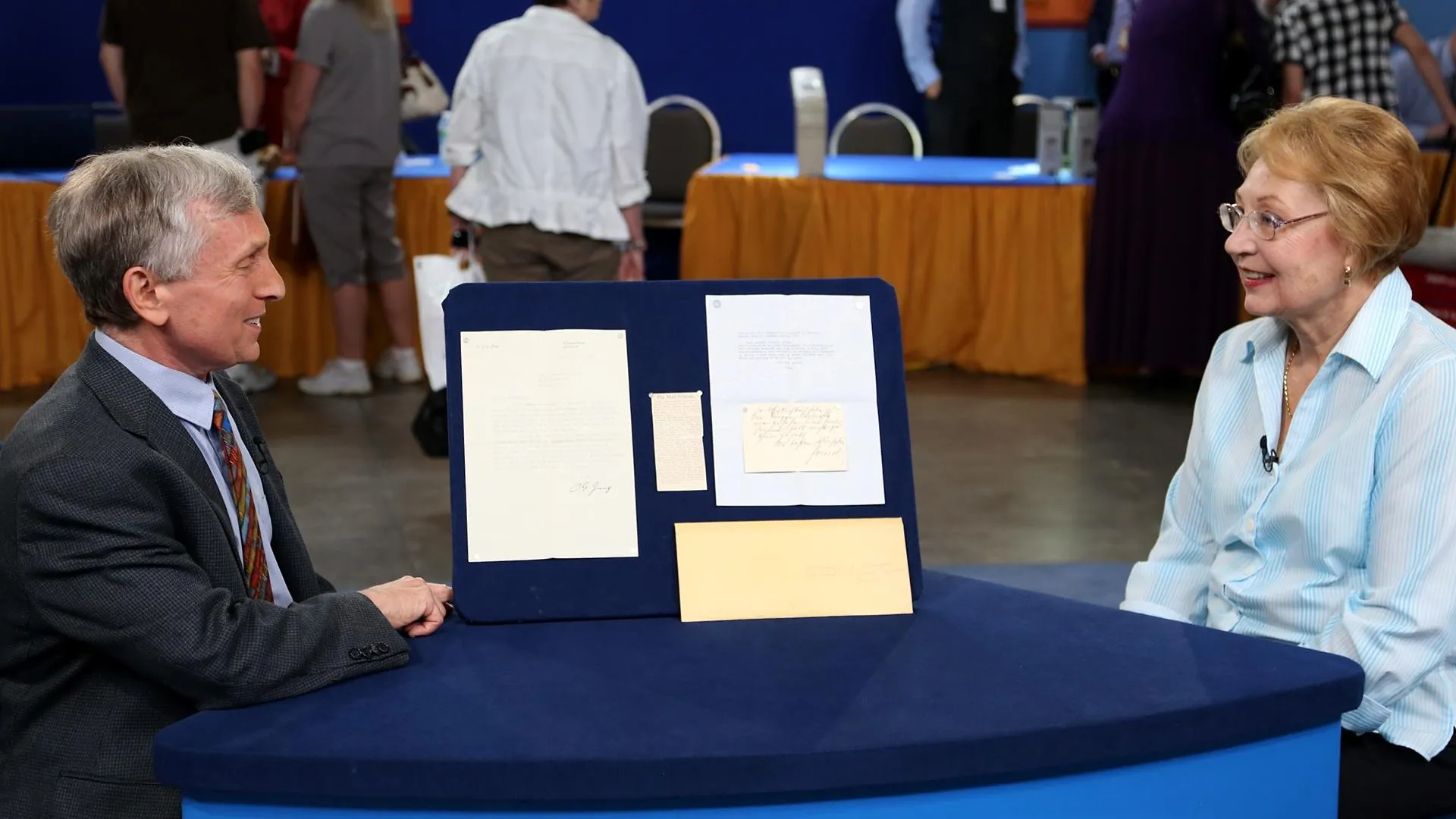GUEST: This actually was acquired by my grandfather. He and my grandmother were sort of amateur porcelain/glass collectors, and they just had a small collection of things. And they came back with this from a trip. They took a lot of trips to the Illinois and Missouri area; a lot of relatives down there. I'm not positive, but I think it was purchased down there, probably in a shop of some sort. As far as the price, the impression I got was that they paid a lot for it, but I have no idea the number. I'm guessing a lot for them was probably a couple hundred bucks or so. Hard to say.
APPRAISER: And how long ago do you think that would have been?
GUEST: Probably late '60s, early '70s.
APPRAISER: What do you know about it? What do you think that it is?
GUEST: Well, I remember them talking about majolica, and I think that they referred to that with regard to this.
APPRAISER: Well, you're correct. This is a piece of majolica. Majolica is a type of pottery that is decorated with bright colors. It was especially popular in the last half of the 19th century. It was initially manufactured a great deal in England and in the United States. And then late in the 19th century it began to be manufactured in other parts of Europe; primarily France, Germany, Bohemia, more on the continent. The most desirable majolica is from England, generally. Some of the very best products were made there. Now this particular piece I could tell that it was made not in England, not in the United States, but made on the continent. It's not marked properly, but there's certainly attributes that would make me think that it was German or Bohemian, made in that part of Europe. Primarily, by the colors. It's a paler color palette. These are more like pastel colors, whereas they would be darker, richer colors more often in England and the United States. Also it's the texture of the pottery, which is a little thinner, a little lighter weight. Now, if we take a look at the underside here... there are virtually no marks. However, right in the center-- it's hard to see-- there are some impressed stamped numbers. And that is typical of German-type pottery. Not only majolica, but other German pottery. They're die-stamped, they're not hand-incised. This most likely dates to somewhere around the 1880s, 1890s. Normally, after about 1891 the country of origin would have been impressed into the bottom. It would have been required by law for import into the United States. Most pieces of majolica that are German and Austrian and French that have all these little parts, there is always damage. And to some extent, that is acceptable, but this has no damage, which is amazing. One interesting aspect of this is it's an American Indian made on the continent of Europe.
GUEST: That's what I was going to ask you about. That's odd. I figured it probably was made here just because it's an Indian.
APPRAISER: There were a lot of things made for the American market by European manufacturers, but we have to consider that also if you look at history, Germans-- primarily, but all over Europe, but especially Germans-- have also been fascinated with American Indians, even 150 years ago. Most pieces of German majolica don't sell for a lot of money.
GUEST: Okay.
APPRAISER: But this one is such a great subject matter, the size is great, the condition is great, it's a crossover collectible. My guess is that a retail price on this would be somewhere in the $1,500 to $2,000 range.
GUEST: Oh, wow.
APPRAISER: It's certainly one of the better pieces of German majolica that I've ever seen.
GUEST: Yeah, great.
APPRAISER: It is a great piece.
GUEST: That's neat.



